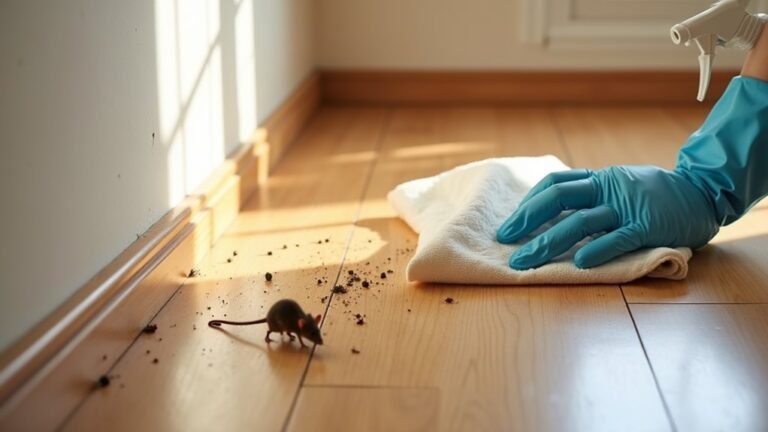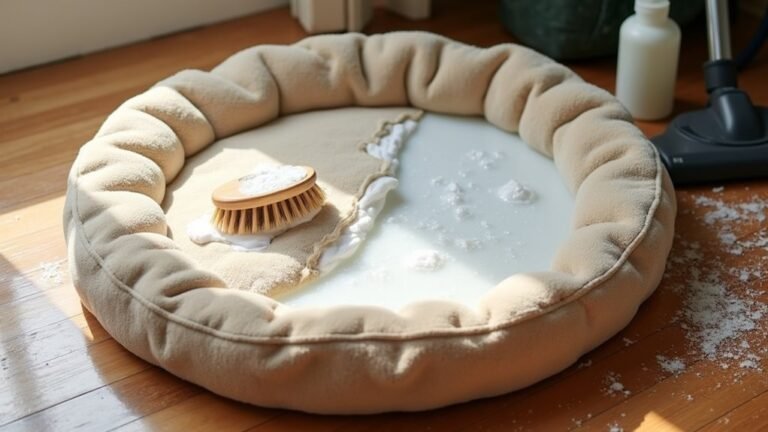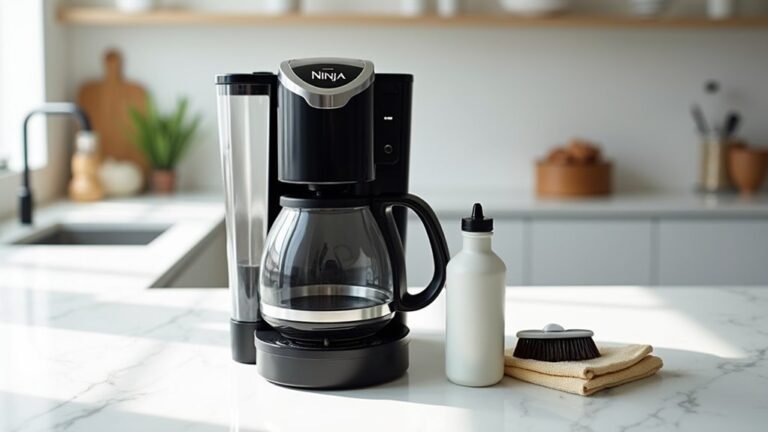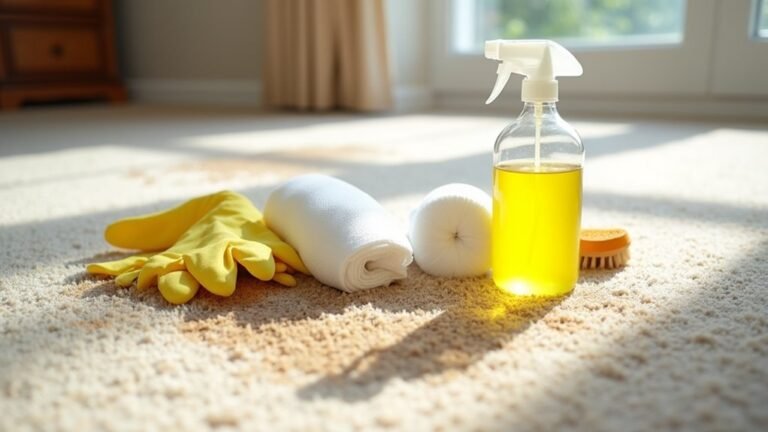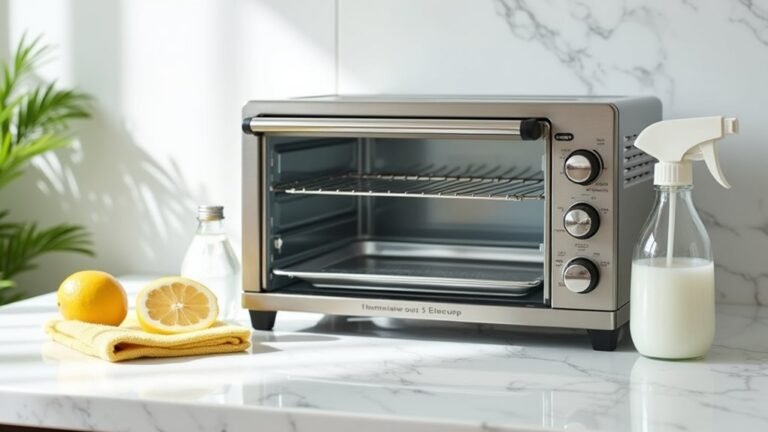Keeping bird feeders clean is super important for the health of our backyard visitors. Just like we wash our dishes after meals, birds need clean places to eat too. While you might think a quick splash of water is enough, properly cleaning a bird feeder takes a few more steps to keep our feathered neighbors safe and coming back for more.
According to Emma Greig, Project Leader at the Cornell Lab of Ornithology's Project FeederWatch, "Dirty feeders can spread diseases from one bird to another. Taking a few minutes to clean your feeders can help prevent birds from getting sick."
Think of your bird feeder as a busy restaurant that needs regular cleaning to stay safe for its customers. A dirty feeder isn't just unpleasant – it can make birds really sick, helping harmful germs and mold grow. It's like leaving food out on your kitchen counter for days – not something you'd want to eat from!
Clean feeders also mean the birds in your yard will keep coming back. Just as you wouldn't return to a restaurant with dirty tables, birds prefer to eat from clean feeders where they can safely enjoy their meals. When we take good care of our feeders, we're actually taking care of the birds that brighten up our backyards every day.
Sanitize for Bird Health
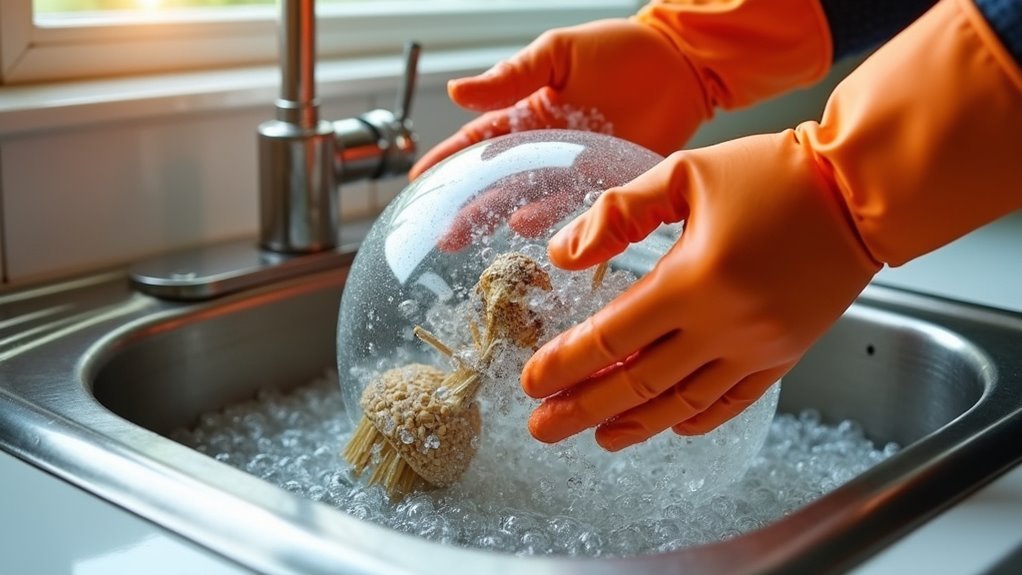
While it's tempting to focus only on keeping bird feeders full, regular sanitization is vital for protecting your feathered visitors' health.
To prevent the spread of bird diseases, we need to clean feeders regularly with a 10% bleach solution, letting them soak for 30-60 minutes.
After sanitizing feeders, rinse them thoroughly multiple times—this guarantees wild birds won't be exposed to harmful residues.
##
Let's explore the essential dos and don'ts of bird feeder maintenance to keep our feathered friends healthy and safe.
When cleaning feeders, we'll need to follow specific steps that include thorough sanitization, proper drying, and regular maintenance schedules.
Whether you're dealing with seed feeders, hummingbird feeders, or suet containers, we'll cover the best practices and common mistakes to avoid during the cleaning process.
Things to Do When Cleaning Bird Feeders
Maintaining clean bird feeders is essential for the health and well-being of visiting birds. Regular cleaning prevents the spread of diseases and guarantees that birds can safely enjoy their meals without exposure to harmful bacteria, mold, or contaminated food.
A thorough cleaning process helps maintain the feeder's condition and creates a more hygienic environment for our feathered friends.
- Remove debris – Clear out old seeds, shells, and droppings before beginning the cleaning process
- Disassemble feeder – Take apart all removable components for thorough cleaning access
- Prepare cleaning solution – Mix one part bleach with nine parts water for an effective sanitizing solution
- Soak components – Immerse all parts in the bleach solution for 30-60 minutes to kill pathogens
- Scrub thoroughly – Use a brush to clean all surfaces, paying special attention to corners and crevices
- Multiple rinses – Wash away all cleaning solution with several clear water rinses
- Complete drying – Allow all parts to air dry completely before reassembly
- Reassemble carefully – Put the feeder back together, guaranteeing all parts are properly secured
- Fresh seed filling – Add new, clean bird seed to the thoroughly dried feeder
Things to Avoid When Cleaning Bird Feeders
When cleaning bird feeders, following proper safety protocols and using appropriate cleaning methods is essential to protect both the birds and yourself. Improper cleaning techniques or using harmful substances can lead to serious health issues for birds and potentially create environments where dangerous bacteria can thrive and spread diseases among bird populations.
- Soap and detergents – These leave harmful residues that can contaminate nectar and make birds sick when ingested.
- Metal scrubbers or abrasive materials – Can create micro-scratches where bacteria hide and multiply.
- Essential oils or fragrances – These substances are toxic to birds and can linger even after rinsing.
- Cleaning in direct sunlight – Causes solutions to evaporate too quickly, reducing their effectiveness against pathogens.
- Cleaning without protective gear – Puts you at risk of exposure to harmful bacteria and bird droppings.
- Bleach solutions stronger than 10% – Can be toxic to birds if not properly diluted and rinsed.
- Hot water on plastic feeders – Can warp or damage the feeder's structure and create cracks where mold grows.
- Chemical disinfectants – Many commercial cleaners contain ingredients dangerous to birds.
Steps
Proper cleaning of bird feeders is essential for maintaining the health of wild birds and preventing the spread of diseases. Regular cleaning not only protects birds from harmful bacteria and mold but also keeps the feeding area sanitary and free from unwanted pests.
By following a systematic cleaning routine, bird enthusiasts can guarantee their feeders remain safe and welcoming for their feathered visitors.
Step 1: Remove all old seed and debris from the feeder
Step 2: Take apart any removable components of the feeder
Step 3: Prepare cleaning solution (9 parts water to 1 part bleach, or equal parts vinegar and hot soapy water)
Step 4: Soak feeder and components in cleaning solution for 30-60 minutes
Step 5: Scrub thoroughly with a brush to remove stuck-on debris
Step 6: Rinse thoroughly with clean water
Step 7: Allow feeder to dry completely
Step 8: Reassemble the feeder
Step 9: Clean the ground beneath the feeder, removing old seed and droppings
Step 10: Refill with fresh seed or appropriate food
Step 11: Return feeder to its mounting location
Final Thoughts
Regular cleaning of bird feeders is one of the most important steps we can take to protect our backyard visitors.
By maintaining a consistent cleaning schedule with bleach solution, removing visible debris, and refilling with fresh food, we're creating a safe environment for birds.
##

Maintaining clean bird feeders is an essential responsibility for any bird enthusiast. Regular cleaning not only protects the health of our feathered visitors but also guarantees they continue to return to your yard.
While the cleaning schedule may seem demanding at first, incorporating these maintenance tasks into your routine will become second nature over time. The small effort required to keep feeders sanitized and areas beneath them clean is minimal compared to the joy of watching healthy birds thrive in your backyard habitat.
Take action today by creating a cleaning schedule that works for you. Start with the basics – regular bleach solution cleanings, prompt removal of debris beneath feeders, and thorough drying before refilling.
Your local birds depend on responsible feeding practices, and your diligence in feeder maintenance will help create a safe haven for them to return to season after season.

